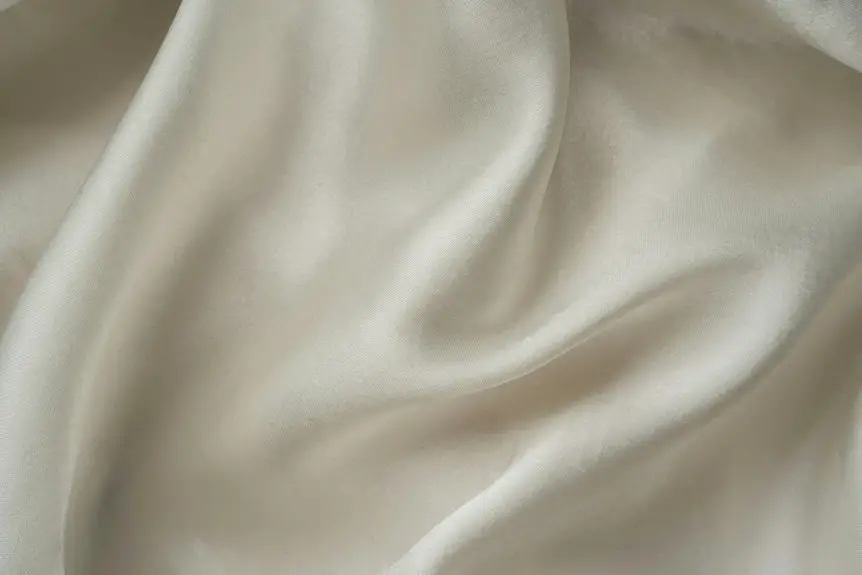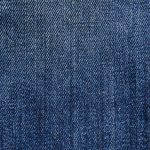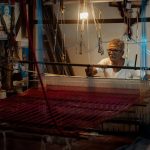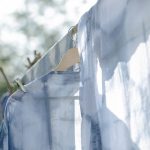You can trust Honeywell Kevlar fabric for unmatched strength and durability in critical applications. It’s five times stronger than steel by weight, resists cuts, abrasions, and extreme heat up to 450°C, making it ideal for protective gear and industrial use. Honeywell’s advanced manufacturing guarantees consistent quality, while ongoing innovations boost performance and sustainability. If you want to understand why Honeywell remains a leader in aramid fibers and how to choose the best fabric for your needs, keep exploring.
Table of Contents
Key Takeaways
- Honeywell Kevlar fabric offers exceptional strength, being five times stronger than steel by weight with high cut and abrasion resistance.
- It withstands extreme temperatures up to 450°C without melting or igniting, ensuring durability in harsh environments.
- Honeywell uses eco-friendly manufacturing methods, reducing energy use, emissions, and chemical waste for sustainable production.
- Kevlar’s superior defense against sharp objects makes it ideal for ballistic, fire-resistant, and industrial protective gear.
- Honeywell provides a variety of Kevlar fabrics tailored to different applications, balancing weight, flexibility, and chemical resistance.
The History and Development of Kevlar
Although Kevlar is now widely recognized for its strength and versatility, its development began in the 1960s when chemist Stephanie Kwolek at DuPont discovered a unique polymer that was both lightweight and incredibly durable.
When you think about it, her invention changed the way materials are used in safety and industry. You can thank her innovative spirit for the fibers that protect you in bulletproof vests, helmets, and even tires.
Over time, manufacturers refined Kevlar’s production, enhancing its performance and adapting it to various applications.
Today, you rely on this material in countless ways without even realizing it. Understanding Kevlar’s origins helps you appreciate how a single breakthrough can revolutionize technology and improve safety worldwide.
Unique Properties of Honeywell Kevlar Fabric
When you handle Honeywell Kevlar fabric, you immediately notice its exceptional strength combined with remarkable flexibility.
This unique blend means you get a material that’s five times stronger than steel by weight, yet still lightweight and comfortable to wear or use.
You’ll appreciate its high tensile strength, which provides excellent resistance to cuts, abrasions, and impacts.
Plus, it maintains its integrity under extreme temperatures, from intense heat to freezing cold, making it reliable in diverse environments.
Reliable performance from scorching heat to freezing cold, ensuring durability in every environment.
The fabric’s chemical resistance also protects you from many harsh substances.
Importantly, Honeywell Kevlar’s inherent durability doesn’t degrade over time, so you can trust it for long-term performance.
When you choose this fabric, you’re opting for unmatched protection and versatility tailored to demanding applications.
Manufacturing Process of Kevlar Fibers
The manufacturing process of Kevlar fibers involves several precise steps that transform raw materials into the strong, flexible fabric you rely on.
It starts with a chemical reaction between para-phenylenediamine and terephthaloyl chloride, producing a liquid polymer solution. You then spin this solution through a specialized spinneret, forming long, continuous fibers.
These fibers undergo a controlled stretching process called cold drawing, which aligns the polymer chains and considerably enhances strength and durability. After that, the fibers are washed and dried to remove impurities.
Finally, the finished fibers are wound onto spools, ready for weaving into fabric. Throughout this process, strict quality control guarantees consistency, so you get Kevlar fibers with reliable performance every time.
This precision is key to Kevlar’s exceptional strength-to-weight ratio.
Applications of Kevlar in Personal Protective Equipment
When you gear up with Kevlar, you get high-quality ballistic protection that can save your life in critical situations.
You’ll also find Kevlar in fire-resistant clothing, designed to keep you safe from intense heat and flames.
Let’s explore how this incredible fabric powers personal protective equipment.
Ballistic Protection Uses
Although you mightn’t realize it, Honeywell Kevlar fabric plays an essential role in ballistic protection by providing lightweight yet highly durable materials for personal protective equipment.
When you wear Kevlar-based gear, like bulletproof vests or helmets, you benefit from its ability to absorb and disperse the energy of bullets and shrapnel. This means you get reliable protection without the burden of heavy armor.
Law enforcement officers, military personnel, and security professionals trust Kevlar for its strength and flexibility, which allow for greater mobility during critical situations.
Plus, Honeywell’s rigorous quality standards guarantee each fabric layer performs consistently.
Fire-Resistant Gear
Beyond ballistic protection, Honeywell Kevlar fabric also shines in fire-resistant gear, offering lifesaving benefits in extreme heat and flame exposure.
When you wear Kevlar-based protective clothing, you gain exceptional thermal resistance that helps prevent burns and injuries. Firefighters, industrial workers, and military personnel rely on this material to withstand sudden flames and intense heat without compromising mobility or comfort.
Kevlar’s inherent strength and heat resistance mean your gear won’t easily melt or ignite, giving you vital extra seconds to react in dangerous situations.
Plus, its lightweight nature guarantees you stay agile while staying protected. Choosing Honeywell Kevlar for your fire-resistant gear means trusting proven technology designed to keep you safe when every moment counts.
Kevlar’s Role in Aerospace and Automotive Industries
Since Kevlar offers exceptional strength-to-weight ratio and resistance to heat and impact, it plays an essential role in both aerospace and automotive industries.
When you use Kevlar in aircraft, you benefit from lighter, stronger components that improve fuel efficiency and safety. Its durability helps protect critical parts from damage during turbulence or minor collisions.
In automotive applications, Kevlar reinforces tires, brake pads, and body panels, enhancing performance and crash protection. You’ll also find it in racing cars, where strength and weight are vital for speed and control.
By integrating Kevlar fabric, manufacturers reduce overall vehicle weight without compromising strength, leading to better handling and fuel economy.
Ultimately, you rely on Kevlar to meet demanding standards, ensuring both aerospace and automotive products perform reliably under stress.
Heat and Abrasion Resistance Characteristics
You’ll appreciate how Honeywell Kevlar fabric handles extreme heat without breaking down, making it ideal for tough environments.
Its abrasion resistance keeps it durable against daily wear and tear, extending the fabric’s lifespan.
Let’s explore how these protective qualities give you reliable performance in demanding situations.
High-Temperature Performance
When you need materials that withstand extreme heat and rigorous wear, Honeywell Kevlar fabric delivers exceptional high-temperature performance.
You’ll find it remains stable and strong even when temperatures soar, protecting you and your gear in hazardous environments.
Here’s why it stands out:
- Heat Resistance: Kevlar resists degradation at temperatures up to 450°C (842°F), so it won’t melt or ignite easily under intense heat.
- Thermal Stability: Its molecular structure maintains integrity, ensuring consistent protection during prolonged heat exposure.
- Flame Resistance: It self-extinguishes quickly, reducing fire hazards and enhancing safety in critical applications.
Wear and Tear Durability
Beyond its impressive heat resistance, Honeywell Kevlar fabric also excels in handling everyday wear and tear, making it a reliable choice for demanding environments.
You’ll find that its abrasion resistance stands up to harsh conditions, whether you’re working with rough surfaces or facing constant friction. This fabric won’t easily fray or degrade, maintaining its integrity over time.
When you use Honeywell Kevlar, you get material designed to endure tough use without compromising performance. Its toughness helps you avoid frequent replacements, saving you time and money.
You can count on it to maintain strength and flexibility, even after repeated exposure to heat and mechanical stress.
With Honeywell Kevlar, you get durable protection tailored to your active needs.
Protective Advantages Overview
Although Honeywell Kevlar fabric is widely recognized for its heat resistance, its protective advantages extend further to include exceptional abrasion resistance.
When you choose Kevlar, you gain a fabric designed to protect you in harsh environments by combining multiple strengths.
- Heat Resistance: Kevlar withstands extreme temperatures without melting or degrading, keeping you safe in high-heat scenarios.
- Abrasion Resistance: Its tightly woven fibers resist wear and tear, ensuring longevity even with constant friction.
- Cut and Puncture Protection: Kevlar’s molecular structure offers superior defense against sharp objects, reducing injury risks.
Comparing Kevlar With Other Aramid Fibers
How does Kevlar stand up against other aramid fibers?
When you compare Kevlar to fibers like Nomex or Twaron, you’ll notice Kevlar offers superior tensile strength and impact resistance, making it ideal for ballistic and cut-resistant applications.
While Nomex excels in heat and flame resistance, Kevlar outperforms it in durability and abrasion resistance.
Twaron shares similar strength characteristics with Kevlar but often comes at a higher cost or with different processing requirements.
If your priority is lightweight protection combined with exceptional toughness, Kevlar is a smart choice.
It balances strength, durability, and versatility better than many alternatives.
Understanding these differences helps you select the right aramid fiber for your specific needs without compromising performance.
Innovations and Advancements in Kevlar Technology
As you explore the latest developments in Kevlar technology, you’ll find that Honeywell continuously pushes the boundaries to enhance its performance and application range.
They focus on making Kevlar stronger, lighter, and more versatile to meet evolving industry needs.
Here are three key innovations you should know about:
- Enhanced Fiber Weave – Honeywell has developed tighter, more uniform weaving techniques that improve durability without adding weight.
- Hybrid Material Integration – Kevlar is now combined with other advanced fibers to boost flexibility and impact resistance.
- Improved Heat Resistance – New formulations allow Kevlar to withstand higher temperatures, expanding its use in extreme environments.
These advancements guarantee that when you choose Kevlar, you get cutting-edge protection and performance tailored for modern challenges.
Environmental Impact and Sustainability of Kevlar
You’ll want to contemplate how Kevlar’s production methods impact the environment and what steps Honeywell takes to make them more eco-friendly.
It’s also important to look at how Kevlar fabric can be recycled or if it breaks down naturally over time.
Understanding these factors helps you see the full picture of Kevlar’s sustainability.
Eco-Friendly Production Methods
Although producing high-performance materials like Kevlar typically involves energy-intensive processes, Honeywell has implemented eco-friendly production methods that reduce environmental impact.
When you choose Honeywell Kevlar, you benefit from innovations that focus on sustainability without compromising quality.
Here are three key approaches Honeywell uses:
- Energy Efficiency: They optimize manufacturing to cut energy use, lowering greenhouse gas emissions.
- Water Conservation: Advanced recycling systems reduce water consumption throughout the production cycle.
- Reduced Chemical Waste: Honeywell employs cleaner chemical processes and recycles solvents to minimize hazardous waste.
Recycling and Biodegradability
When considering the sustainability of Honeywell Kevlar, its recycling and biodegradability play essential roles.
You should know that Kevlar is a highly durable aramid fiber, which makes recycling challenging but not impossible. While it doesn’t biodegrade quickly due to its strong chemical bonds, Honeywell is actively exploring advanced recycling methods to recover and repurpose Kevlar fibers from used products.
You can contribute to reducing waste by supporting these efforts and choosing products made from recycled Kevlar.
Although natural breakdown is limited, the industry’s focus on circularity helps minimize environmental impact.
Choosing the Right Kevlar Fabric for Your Needs
How do you determine which Kevlar fabric suits your specific needs? Start by identifying the primary purpose of your project. Honeywell offers various Kevlar fabrics tailored for different applications, so pinpointing your use case is key.
Next, consider these factors:
- Weight and Thickness: Choose lighter fabrics for flexibility and heavier ones for maximum protection.
- Weave Style: Different weaves provide varying levels of durability and resistance—select one that matches your performance requirements.
- Environmental Resistance: If your project faces harsh conditions, pick Kevlar with enhanced chemical or UV resistance.
Frequently Asked Questions
How Should Kevlar Fabric Be Cleaned and Maintained?
You should clean Kevlar fabric gently by hand washing with mild detergent in cold water. Avoid bleach or harsh chemicals, and air dry it away from direct sunlight to maintain its strength and durability over time.
What Are the Storage Requirements for Kevlar Fabric?
Don’t let Kevlar fabric gather dust in the wind. You should store it in a cool, dry place away from direct sunlight and chemicals. Keep it flat or rolled to avoid creases and preserve its strength.
Can Kevlar Fabric Be Dyed or Printed On?
You can’t easily dye Kevlar fabric because it resists most dyes, but you can print on it using specialized inks and techniques designed for aramid fibers. Just be sure to test for adhesion and durability first.
What Is the Cost Range of Honeywell Kevlar Fabric?
You’ll find Honeywell Kevlar fabric costs vary widely based on weight and weave, typically ranging from $20 to $100 per yard. Prices depend on specifications and purchase volume, so getting a direct quote is always best.
Are There Any Health Risks Associated With Handling Kevlar Fibers?
You won’t face major health risks handling Kevlar fibers, but avoid inhaling dust or fibers, as they might irritate your skin, eyes, or lungs. Wearing protective gear helps keep you safe during handling and cutting.
- How to Wash Cotton Percale Sheets for a Longer Lifespan - July 14, 2025
- What Is Percale Cotton vs. Cotton? A Detailed Comparison - July 14, 2025
- What’s the Difference: Percale Cotton vs. Standard Cotton? - July 14, 2025







